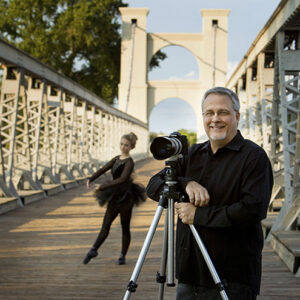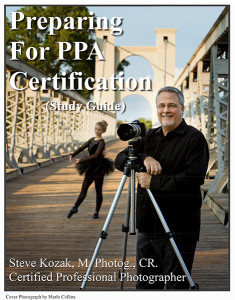 Shutter Speeds
Shutter Speeds
by Steve Kozak
M. Photog., CR.
CPP
This camera control is usually found on the body of the camera, although on older cameras, it is sometimes found on the lens. The shutter speed controls the amount of light that reaches the film by determining how long the lens remains open. Memorize these shutter speeds:
![]() Notice that shutter speeds continue in both directions. Also note that we go from 1 second to 1/2 second. Your camera will not show these speeds in fraction form. When you look at your shutter speed dial and it says 500, it means that it is 1/500th of a second!
Notice that shutter speeds continue in both directions. Also note that we go from 1 second to 1/2 second. Your camera will not show these speeds in fraction form. When you look at your shutter speed dial and it says 500, it means that it is 1/500th of a second!
In our previous lesson, we looked at setting up our camera in either 1/2 or 1/3 stop increments. Refer to your manual if you need help switching from one to the other.
With your camera set to 1/3 stops, write down all of the shutter speeds that your camera shows between 1 Sec and 1/2000.
1 ____ ____ 2 ____ ____ 4 ____ ____ 8 ____ ____ 15 ____ ____ 30____ ____
60 ____ ____ 125 ___ ____ 250 ____ ____ 500 ____ ____ 1000 ____ ____ 2000
Now, go into your menu and change your camera from 1/3 to ½. This will eliminate some of the “clutter” on your dial and make it easier for you to dial through the f-stops and shutter speeds. I think this is a VERY HELPFUL option if your camera allows this. Don’t be sad if you camera does not allow this.
Now, write down the new stops between 1 second and 1/2000.
1 _____ 2 _____ 4 _____ 8 _____ 15 _____ 30_____ 60 _____ 125 ____
250 _____ 500 _____ 1000 _____ 2000
Again, you don’t need to memorize the 1/3 and 1/2 stops, just know they exists.
(Now comes the tricky part!)
The smaller the shutter speed number (1/1000), the faster the shutter.
The larger the shutter speed number (1/2), the slower the shutter.
(Just because your camera says 1000 – it is not bigger than 2. Remember these are fractions.)
A fast shutter speed allows less light to reach the sensor than a slow shutter speed.
More light reaches the sensor during 1/2 second than 1/1000th of a second.
Shutter speeds have the same relationships to each other as do the f-stops in that when you move from one shutter speed to the next: You either double the amount of light that reaches the sensor or you cut it in half.
EXAMPLE:
-Move from 1/250 to 1/125 and the amount of light reaching the sensor doubles.
-Move from 1/30 to 1/15 and the amount of light reaching the sensor doubles.
The pattern continues.
ON THE OTHER HAND:
-Move from 1/30 to 1/60 and the amount of light reaching the sensor is cut in half.
-Move from 1/500 to 1/1000 and the amount of light reaching the sensor is cut in
half.
The pattern continues.
So in Summary:



